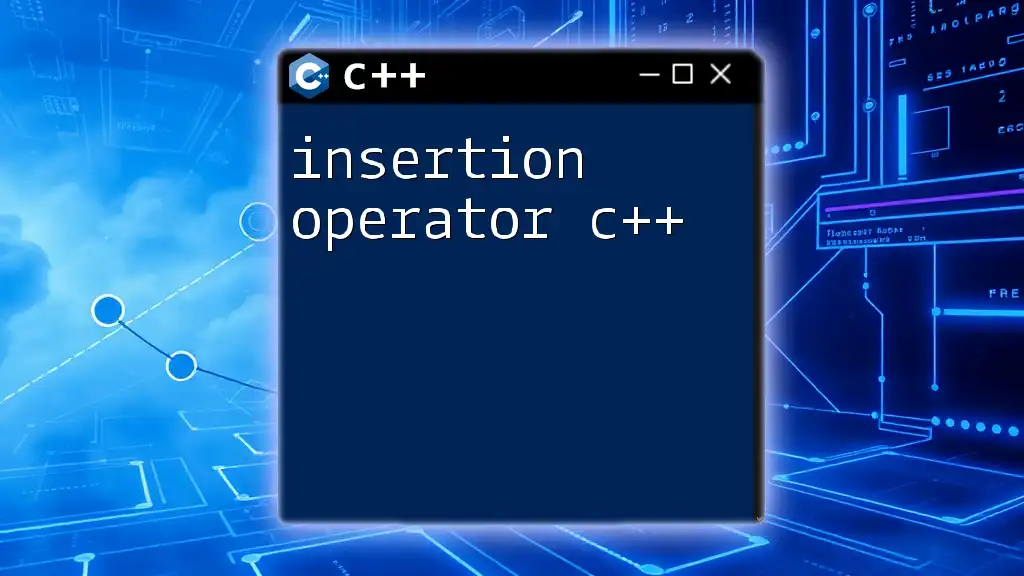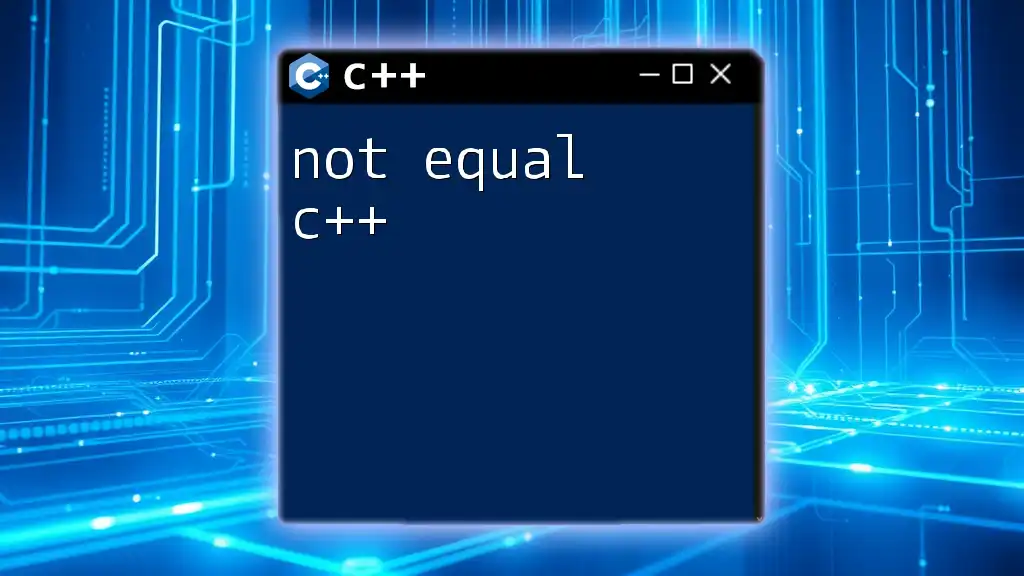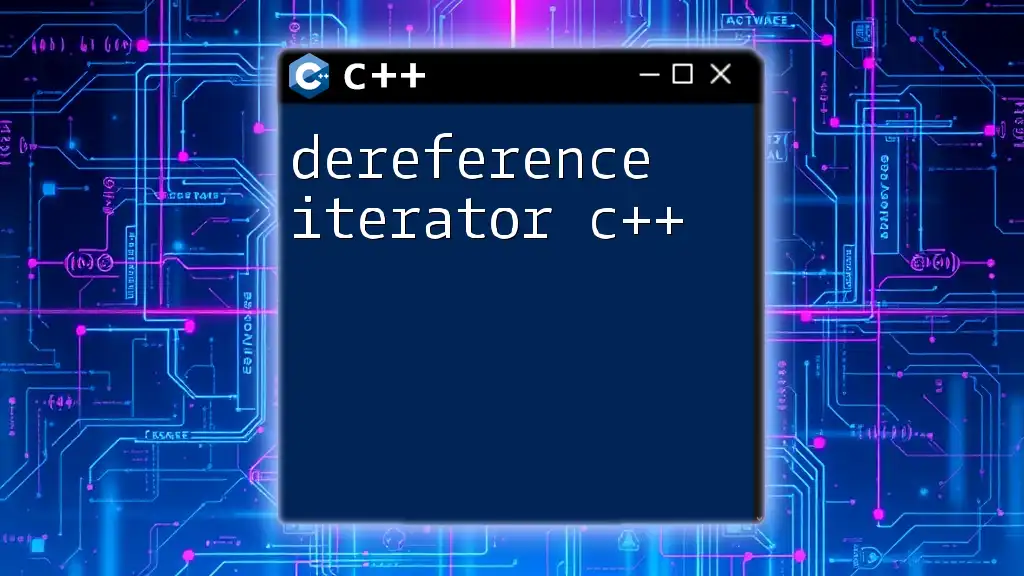In C++, the "greater than or equal to" operator (represented as `>=`) is used to compare two values, returning `true` if the left operand is greater than or equal to the right operand, and `false` otherwise.
Here's a code snippet demonstrating its usage:
#include <iostream>
using namespace std;
int main() {
int a = 10;
int b = 5;
if (a >= b) {
cout << "a is greater than or equal to b" << endl;
} else {
cout << "a is less than b" << endl;
}
return 0;
}
Understanding the Greater Than or Equal To Operator
Definition of the Greater Than or Equal To Operator
In C++, the greater than or equal to operator is represented by the symbol `>=`. This operator is fundamental in comparison expressions, allowing programmers to compare two values to determine if the first is either greater than or equal to the second. It plays a crucial role in decision-making processes within programs, facilitating various conditional structures.
Syntax of the Greater Than or Equal To Operator
The syntax for utilizing the greater than or equal to operator is straightforward. It can be integrated into conditional statements, which dictate the flow of the program based on the truth value of the expression. The basic example of using `>=` is as follows:
if (a >= b) {
// Code block to execute if a is greater than or equal to b
}
This highlights the direct nature of using the `>=` operator: it returns `true` if the condition holds and executes the corresponding block of code.

Practical Applications of the Greater Than or Equal To Operator
Using the Operator in Conditional Statements
A prevalent use of the greater than or equal to operator is in conditional statements. For example, consider a scenario where we want to determine if a student has passed based on their score.
#include <iostream>
using namespace std;
int main() {
int score;
cout << "Enter your score: ";
cin >> score;
if (score >= 50) {
cout << "You passed!" << endl;
} else {
cout << "You failed." << endl;
}
return 0;
}
In this example, the program checks if the `score` entered by the user is greater than or equal to `50`. If true, it outputs a passing message; otherwise, it prompts a fail message.
Utilizing the Operator in Loops
Greater Than or Equal To in While Loops
The greater than or equal to operator is also useful in controlling loop iterations. Consider the following `while` loop example, which counts down from a specified number:
#include <iostream>
using namespace std;
int main() {
int i = 10;
while (i >= 0) {
cout << i << " ";
i--;
}
return 0;
}
In this scenario, the loop continues as long as `i` is greater than or equal to zero. It effectively counts down, demonstrating how `>=` can maintain loop execution until a particular condition is no longer met.
Greater Than or Equal To in For Loops
Similarly, `>=` can be employed within a `for` loop to manage iterations effectively. The following code illustrates this concept:
#include <iostream>
using namespace std;
int main() {
for (int j = 5; j >= 1; j--) {
cout << j << " ";
}
return 0;
}
Here, the loop iterates while `j` is greater than or equal to `1`, enabling it to print numbers from `5` down to `1`. This showcases the versatility of the greater than or equal to operator across various control structures.
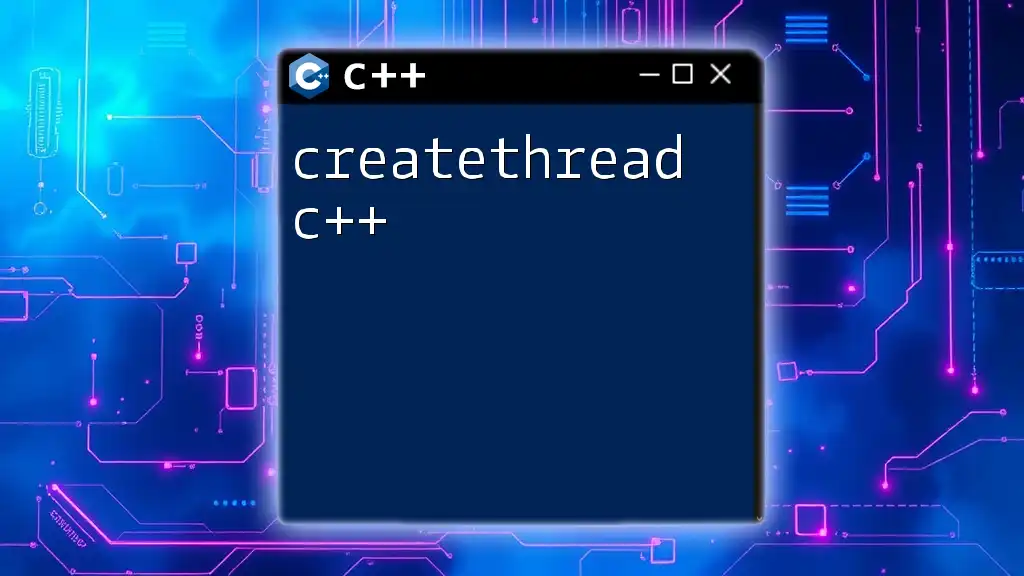
Common Mistakes with the Greater Than or Equal To Operator
Avoiding Operator Confusion
In programming, clarity is crucial, and a common pitfall involves confusing the greater than or equal to operator with other comparison operators. For instance, consider the following incorrect example:
int x = 10;
if (x >= 5) {
// Correct usage
}
if (x > = 5) {
// Error: space between > and =
}
In the second `if` statement, the introduction of a space between `>` and `=` will lead to a syntax error. It underscores the importance of understanding and correctly applying the operator.
Logical Errors in Complex Conditions
Complex conditions involving the greater than or equal to operator can sometimes lead to logical errors if not constructed carefully. For example:
if (x >= 5 || y <= 10) {
// Ensure logical conditions are clear
}
While it looks correct, ensuring that the logical structure aligns with your intent is imperative. It can be easy to misinterpret the conditions, leading to unexpected results.
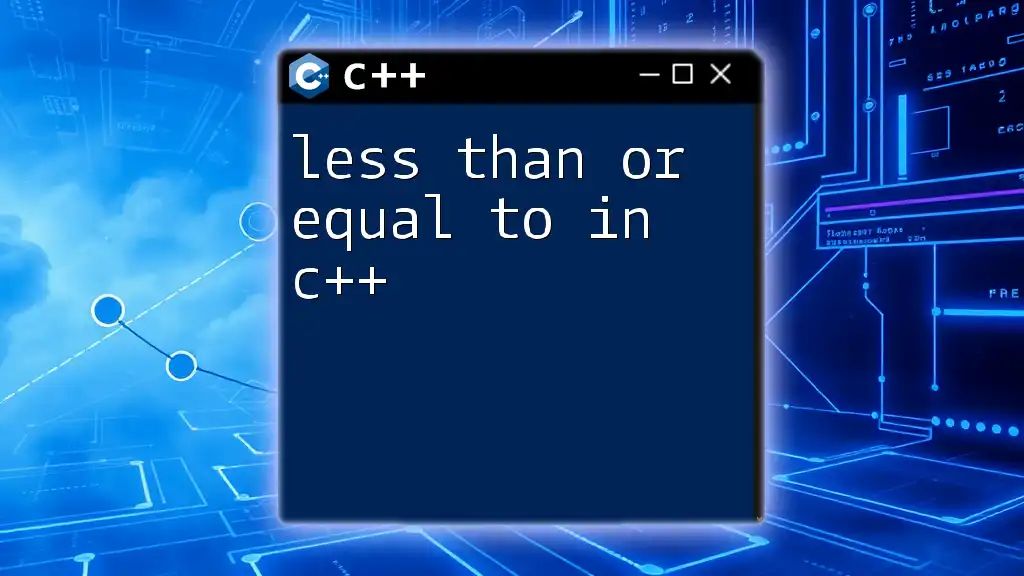
Best Practices When Using the Greater Than or Equal To Operator
When using the greater than or equal to operator in your C++ code, adhere to these best practices:
-
Clarity is Key: Write conditions in a manner that promotes readability. Instead of embedding multiple comparisons in a single statement, consider separating them for clarity.
-
Consistent Formatting: Maintain consistent whitespace around operators. Proper formatting not only enhances readability but also minimizes the risk of space-related errors.
-
Testing Conditions: Always test your conditions with diverse inputs to ensure your logic holds. Verifying conditions will help catch any logical or syntax errors early in development.
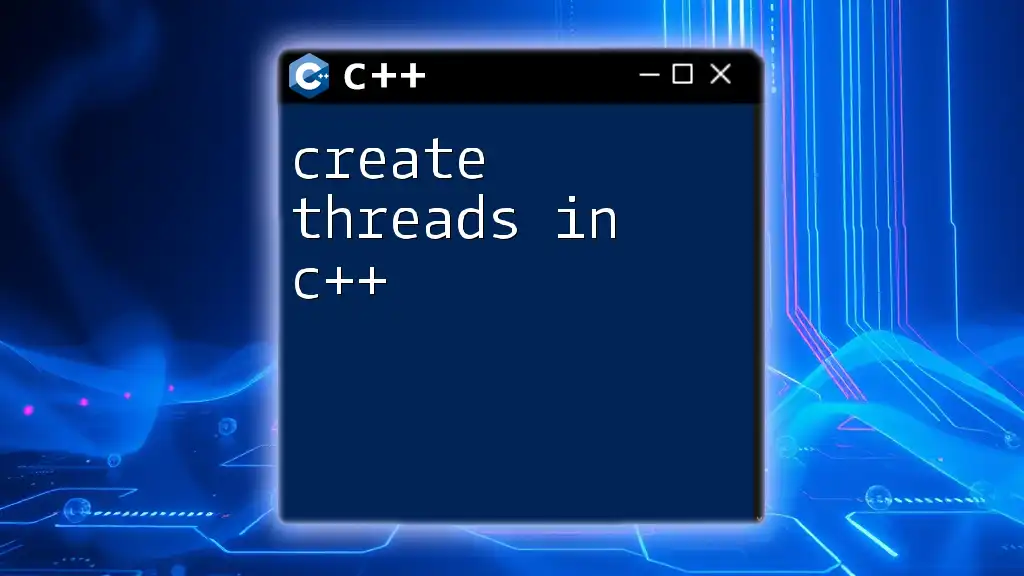
Conclusion
The greater than or equal to operator in C++ is a fundamental component of programming logic, enabling developers to compare values effectively. Understanding its applications in conditional statements and loops, recognizing common mistakes, and adhering to best practices can significantly improve your coding proficiency. Practice using the `>=` operator in various scenarios to solidify your understanding and become more adept in C++. For further learning, feel free to explore additional resources and communities dedicated to C++ programming.







